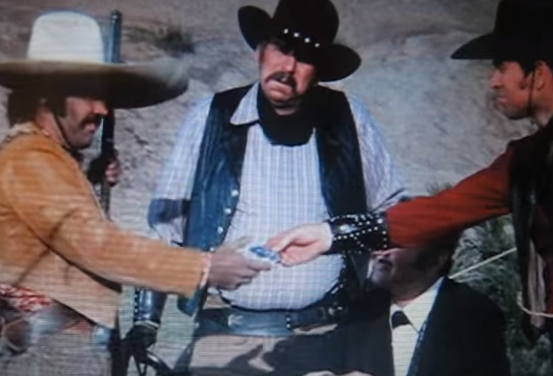“We Don’t Need No Stinking Badges” – On Facebook: eDiscovery Case Law

If you’re near my age and love movies, you probably love the classic Mel Brooks comedy Blazing Saddles. My favorite quote from that movie is when the bandido says “Badges? We don’t need no stinking badges!”* Apparently, there’s a new trend where people post pictures of their employee badges on social media. Guess what that leads to? Hacker access into their employer’s facilities.
According to an article on Forbes.com (Here’s Why Your Employer Gets Nervous When You Post Pictures On Facebook), there’s a new trend on social media where people are posting photos of their new employee ID badges called “badge bragging”. Not surprisingly, according to Brian Varner, Cyber Security Services at Symantec, this trend can give a cyber criminal enough information to compromise personal or company security systems.
One example he cited involved a person who just started a new job at a prestigious hospital. He posted a photo of his new employee ID badge on social media. With just that photo, a hacker could copy the security bar code and make a fake badge to gain access to various systems. Also, the hacker would know the employee’s full name, department he worked in, his education, and the date he started.
Varner identified a few best practices that included developing a policy for employees that addresses posting images or details about work activities online, making security training a part of new employee onboarding and regular reinforcement of good security “hygiene” with constant communication to reinforce best practice behavior.
It’s amazing the ways that hackers can get personal information these days – avoiding security breaches is more challenging than ever.
*By the way, here’s a little trivia: this is not the first time that quote appeared on film or TV. Most people think the Blazing Saddles quote is taken directly from the classic (not comedy) movie The Treasure of the Sierra Madre. But, that quote is a little bit different (“Badges? We ain’t got no badges! We don’t need no badges! I don’t have to show you any stinking badges!”).
The exact quote actually appeared first in an episode of the sixties TV comedy show The Monkees (the first episode of Season 2 in 1967, 6 1/2 years before it was used in Blazing Saddles). Maybe Mel Brooks was a fan of The Monkees? Stump your friends with that little piece of trivia!
So, what do you think? Does your organization have policies in place regarding information shared by employees on social media? Please share any comments you might have or if you’d like to know more about a particular topic.
Image Copyright © Warner Bros. Inc.
Disclaimer: The views represented herein are exclusively the views of the author, and do not necessarily represent the views held by CloudNine. eDiscovery Daily is made available by CloudNine solely for educational purposes to provide general information about general eDiscovery principles and not to provide specific legal advice applicable to any particular circumstance. eDiscovery Daily should not be used as a substitute for competent legal advice from a lawyer you have retained and who has agreed to represent you.






